Manitoba << `man` ih TOH buh >> is one of Canada’s three Prairie Provinces. The other two are Alberta and Saskatchewan. Manitoba lies midway between the Atlantic and Pacific oceans. Winnipeg, Manitoba’s capital and largest city, is the main transportation center linking eastern and western Canada.

More than half the people of Manitoba live in the Winnipeg metropolitan area. Winnipeg is the province’s major industrial center. Food-processing plants, plants that manufacture transportation equipment, clothing factories, and factories that make other products operate in Winnipeg. The city also serves as a major distribution center.
Winnipeg lies in the plains that cover part of southern Manitoba. This fertile region has the richest farmlands in the province. In summer, vast fields of wheat and other grains wave in the sun. Large numbers of beef cattle graze in fenced pastures. Other important farm products of this southern region include canola, hogs, milk, oats, and potatoes.
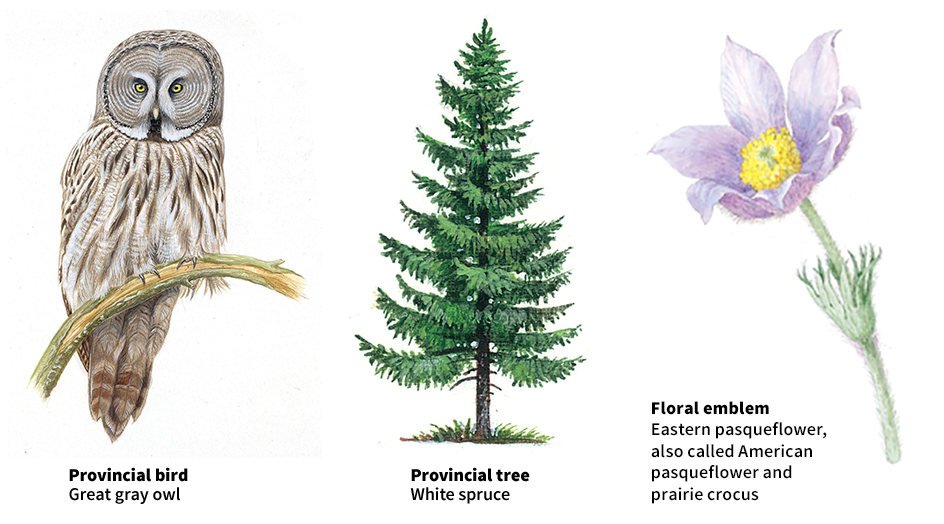
A vast, rocky region lies across the northern two-thirds of Manitoba. This thinly populated region has great deposits of copper, nickel, and zinc. Thompson is the center of nickel production in Manitoba. This thriving town was carved out of the wilderness after prospectors discovered vast deposits of nickel in the area. The province ranks among the leading North American producers of zinc.
Thick forests stretch across the southern half of the region. Balsam fir, spruce, and other trees that grow in this area provide wood for Manitoba’s furniture factories and paper mills.
Manitoba’s many rivers and lakes cover almost a sixth of the province and help make it a popular vacationland. Tourists enjoy boating and swimming in the clear, sparkling waters. Fishing enthusiasts come from many parts of North America to cast for bass, catfish, pike, and trout. In the rugged forests of Manitoba, hunters track black bear, caribou, elk, moose, and smaller game. In the province’s marshes and prairies, hunters shoot ducks, geese, and sharp-tailed and ruffed grouse.
Beaver and other fur-bearing animals made the Manitoba region important during the late 1600’s. English fur traders entered the rich fur country from Hudson Bay in the northeast. French-Canadian traders came westward from Quebec during the early 1700’s. The fur traders paddled their birchbark canoes up Manitoba’s rivers and traveled through forests and plains. They traded with the First Nations of the region and built forts and trading posts in the wilderness. First Nations are Indigenous (native) peoples of Canada. Irish and Scottish farmers began breaking up the plains of Manitoba in the early 1800’s. They created vast wheat fields in the fertile Red River Valley. Shortly after joining the Dominion of Canada in 1870, Manitoba began exporting wheat, and the grain became famous for its high quality.
The word Manitoba probably came from the Algonquian language of the First Nations people who believed the manito (great spirit) made the echoing sounds that came from a strait of Lake Manitoba. These sounds were actually made by waves dashing against limestone ledges on the shore. The Indigenous people called this part of the lake Manito waba (great spirit’s strait).
Manitoba’s nickname is the Keystone Province. It earned this nickname because of its location in the central, or keystone, position of the “arch” formed by the 10 Canadian provinces.
For the relationship of Manitoba to the other Canadian provinces, see the World Book articles on Canada; Canada, Government of; Canada, History of; Prairie Provinces.
People
Population.
The 2021 Canadian census reported that Manitoba had 1,342,153 people. The population of the province had increased by about 5 percent over the 2016 figure of 1,278,365.
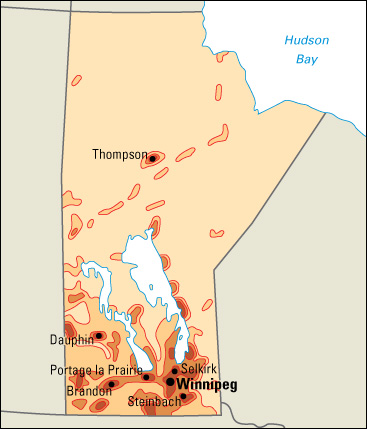
About 75 percent of the people of Manitoba live in urban areas. About 60 percent live in the metropolitan area of Winnipeg. Winnipeg is the largest city and chief industrial center. It has the province’s only Census Metropolitan Area as defined by Statistics Canada (see Metropolitan area).
Brandon is the next largest city in the province, followed by Steinbach and WInkler. For more information, see the articles on the cities and towns of Manitoba listed in the Related information feature that accompanies this article.
About 80 out of 100 Manitobans were born in Canada. Many of the people in Manitoba have some British ancestry. Other large ethnic groups, in order of size, include Germans, Ukrainians, French, Filipinos, and Polish. Winnipeg’s St. Boniface district is the center of French-Canadian culture in the province. Many of the people born outside of Canada come from Asian countries.
About 57,000 Métis (people with both First Nations and European ancestry) live in Manitoba. Approximately 100,000 First Nations people and about 500 Inuit (Indigenous people of the far north) also live in the province. Manitoba has about 80 Indigenous reserves. Most of the Inuit live near Churchill.
Schools.
The first school in the Manitoba region was set up in 1815 by Scottish settlers to the Red River Colony. Before that, major fur-trading posts provided limited education to Hudson’s Bay Company employees and their families. In 1818, Roman Catholic missionaries led by Joseph Provencher began setting up schools along with churches. John West, an Anglican missionary, opened the Manitoba region’s first Protestant school in 1820. 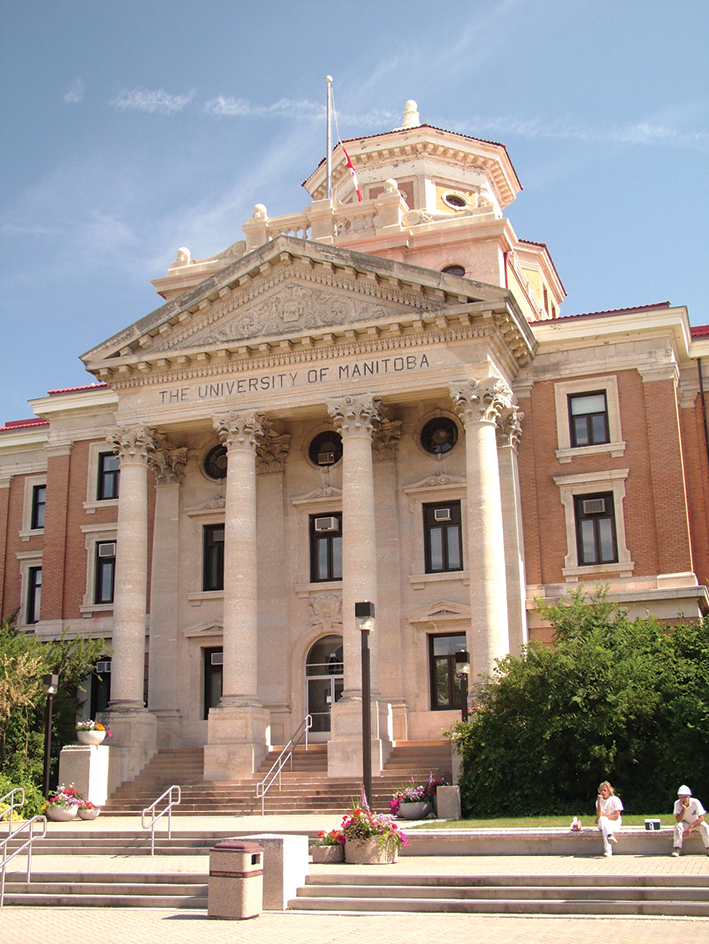
In 1871, a church-supported educational system that had developed was ended. The province created a board of education to direct the schools and provide them with public funds. Roman Catholic board members managed the Roman Catholic schools, and Protestant members supervised the Protestant schools. In 1890, the province abolished the board of education and its double school system. The provincial Department of Education was created to head a single, nondenominational education system. In 1908, the cabinet office of minister of education was established in Manitoba.
Today, Manitoba’s Department of Education and Early Childhood Learning oversees public education from early childhood through post-secondary education. Manitoba law requires all children from age 7 through 17 to attend school.
Libraries and museums.
The largest libraries in the province are all in Winnipeg. They include the Legislative Library of Manitoba, the Millennium Library, the Archives of Manitoba, and the University of Manitoba Libraries. The Hudson’s Bay Company Archives is a division of the Archives of Manitoba. It has records dating from 1670 on the human and natural history of northern and western Canada and the western United States. The Manitoba Museum, in Winnipeg, has exhibits on human and natural history. The Winnipeg Art Gallery features a large collection of modern and contemporary Inuit art. The Canadian Museum for Human Rights is also in Winnipeg.
Visitor’s guide
Manitoba features beautiful white-sand beaches, shimmering lakes, rugged rivers, and vast stretches of untouched wilderness. The province’s streams are full of sport fish. In northern areas, people can watch polar bears and view the dramatic natural light displays known as the aurora borealis or the northern lights. Lake Winnipeg and many other lakes in Manitoba have summer resorts that offer boating and swimming.
Visitors to Manitoba can see many reminders of the province’s colorful history. Forts and trading posts of the early fur-trading days are popular. The beautiful St. Boniface Cathedral, in Winnipeg, stands on the site of the first Roman Catholic church in western Canada. Many people who helped shape the history of Manitoba are buried in the churchyard, including the Métis leader Louis Riel. 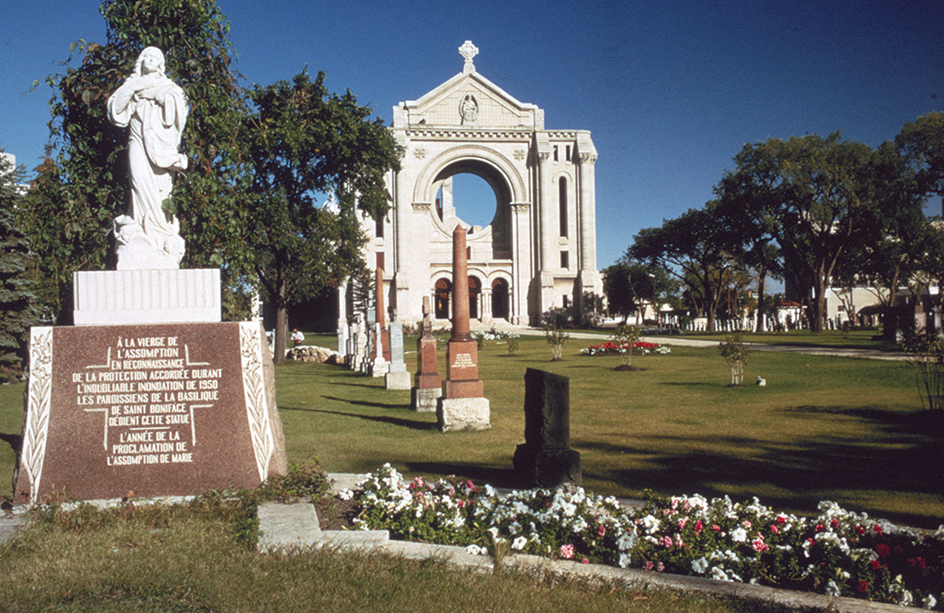
Many visitors to the province attend performances of the Royal Winnipeg Ballet, the Winnipeg Symphony Orchestra, and other groups. Sports fans visit Winnipeg to see the Winnipeg Blue Bombers of the Canadian Football League and the Winnipeg Jets of the National Hockey League.
Manitoba’s annual events include many colorful festivals. The Winnipeg Folk Festival, featuring folk musicians and singers, is held in Birds Hill Provincial Park each July. The National Ukrainian Festival occurs each year in Dauphin.
Land and climate
Land regions.
Manitoba has four main land regions. They are, from northeast to southwest: (1) the Hudson Bay Lowland, (2) the Canadian Shield, (3) the Manitoba Lowland, and (4) the Saskatchewan Plain.
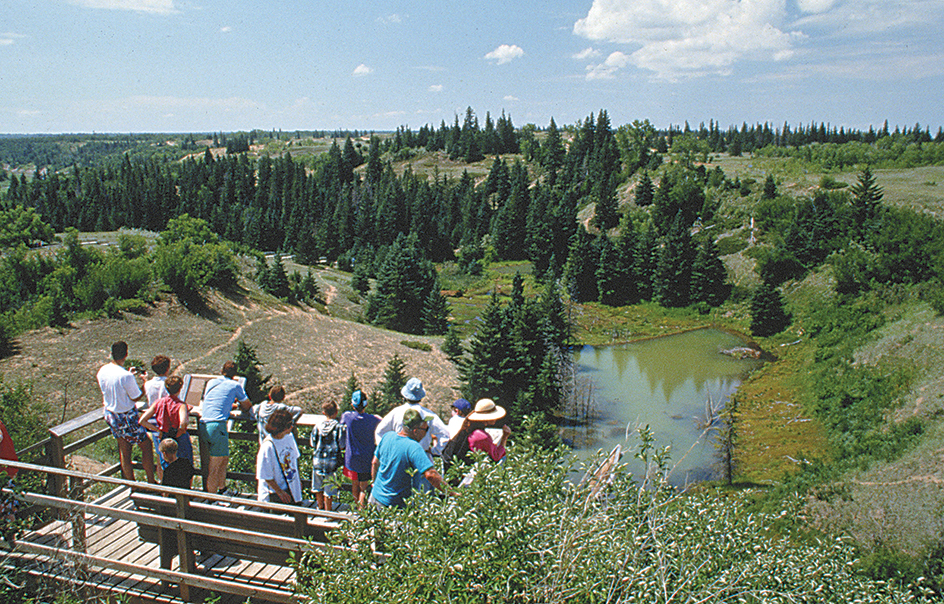

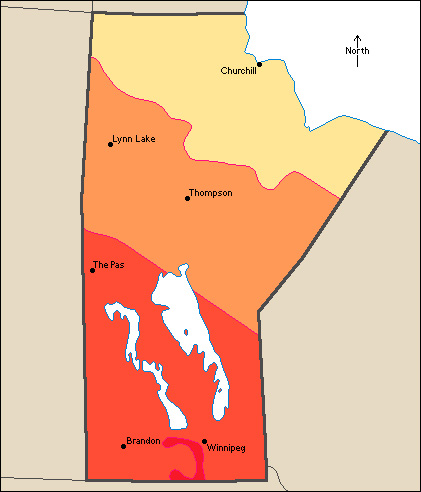
The Hudson Bay Lowland
is a wet plain bordering the southern part of Hudson Bay. In Manitoba, this almost treeless flatland extends about 100 miles (160 kilometers) into the interior. Few people live there.
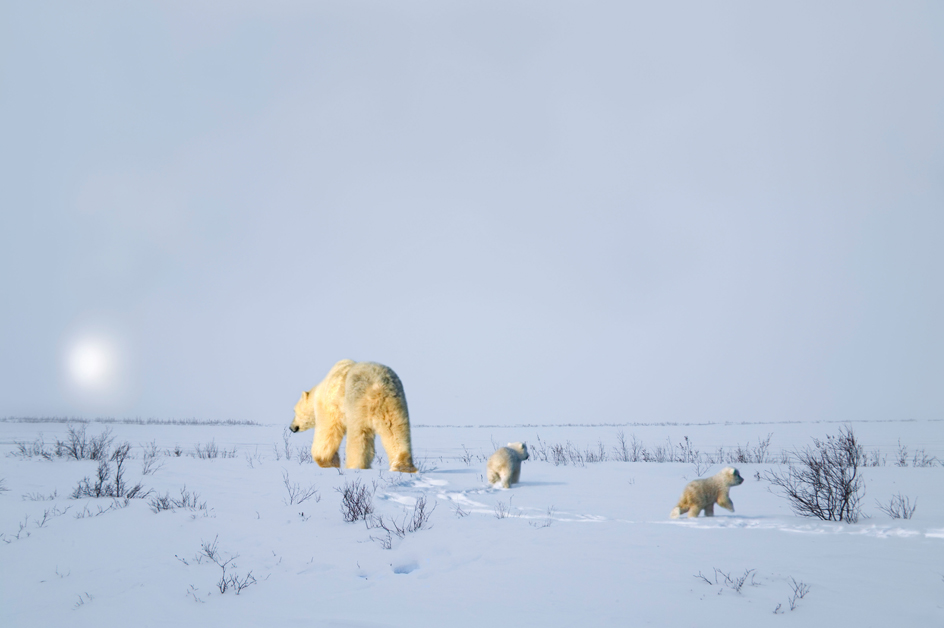
The Canadian Shield
is a vast, horseshoe-shaped region that covers almost half of Canada and part of the United States. The rough shield, made up mostly of granites and other kinds of rocks, covers nearly two-thirds of Manitoba. It has many lakes, streams, and forests, and deposits of copper, nickel, and other minerals. See Canadian Shield.
The Manitoba Lowland
forms part of the Western Interior Plains, the Canadian section of the North American Great Plains. It is a flat area of forests, lakes, limestone rock, prairie, and swamps. The forests have great stands of timber, and the lakes are rich in fish.
The Saskatchewan Plain
also forms part of the Western Interior Plains. This region is a rolling plain broken by low hills. Its rich, well-drained soils make it the main farming region of Manitoba.
Coastline.
Manitoba has 400 miles (645 kilometers) of coastline along Hudson Bay in the northeastern part of the province. Few inlets or islands lie along the coast. Hudson Bay waters are frozen much of the year, and so commercial shipping activities are limited in the coastal region.
Mountains.
The Duck, Porcupine, and Riding mountain ranges form the Manitoba Escarpment. It rises between the two plains regions. The highest point in Manitoba is 2,727-foot (831-meter) Baldy Mountain, in the Duck Mountain range near the Saskatchewan border. The Turtle and Pembina hills of North Dakota extend into the southern part of Manitoba.
Rivers and lakes
cover almost a sixth of Manitoba, or 39,225 square miles (101,592 square kilometers). The rivers form a great waterway system that drains western Canada from as far west as the Rocky Mountains. The Red, Saskatchewan, and Winnipeg rivers flow into Lake Winnipeg. Important branches of the Red River are the Assiniboine and Pembina rivers. The Nelson River flows out of Lake Winnipeg across the Canadian Shield, and empties into Hudson Bay. The Churchill and Hayes rivers also drain northern Manitoba.
Manitoba has about 100,000 lakes. Three lakes are so large that they are often called the Great Lakes of Manitoba. Lake Winnipeg, which covers 9,416 square miles (24,387 square kilometers), is the largest body of water entirely within any province or state. Lake Winnipegosis covers 2,075 square miles (5,374 square kilometers), and Lake Manitoba spreads over 1,785 square miles (4,624 square kilometers). Other lakes include Dauphin, Gods, Island, Reindeer, Southern Indian, and Tadoule.
Plant and animal life.
Manitoba has about 97,000 square miles (251,000 square kilometers) of forests. The most common trees are the aspen, black spruce, jack pine, and white spruce. Others include ash, birch, maple, oak, and tamarack. Columbines, fireweeds, and other wildflowers grow in many parts of the province.
Caribou, elk, and moose live in the northern forests. Deer thrive there and in most parts of southern Manitoba. Fur-bearing animals of the forests include the beaver, fox, lynx, mink, and muskrat. Other animals include the bear, coyote, ermine, otter, and raccoon. Ducks and geese fly north in spring to breed in Manitoba’s lakes and ponds. Grouse, prairie chickens, ptarmigan, and other game birds live in Manitoba. Fish there include bass, goldeye, perch, pickerel, pike, sauger, sturgeon, trout, tullibee, and whitefish. 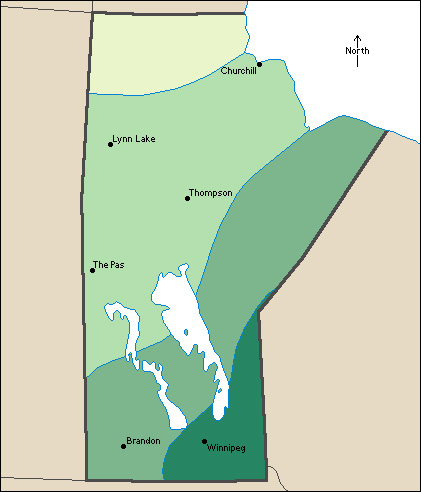
Climate.
Manitoba has long, bitterly cold winters and warm summers. In general, the temperature decreases from the southwestern part of the province to the northeastern section. The average January temperature is 3 °F (–16 °C) in the south and –15 °F (–26 °C) in the north. Average July temperatures range from 66 °F (19 °C) in the south to 55 °F (13 °C) in the north. Manitoba’s precipitation (rain, melted snow, and other forms of moisture) averages 21 inches (53 centimeters) a year. About 50 inches (130 centimeters) of snow falls a year.
Economy
Prior to World War II (1939-1945), the economy of Manitoba was based chiefly on agriculture. Many new industries developed in the 1940’s, and manufacturing increased rapidly. Today, service industries, taken together, make up the largest part of Manitoba’s gross domestic product (GDP)—the total value of all goods and services produced. Goods-producing industries, which include construction, manufacturing, mining, and utilities, rank next.
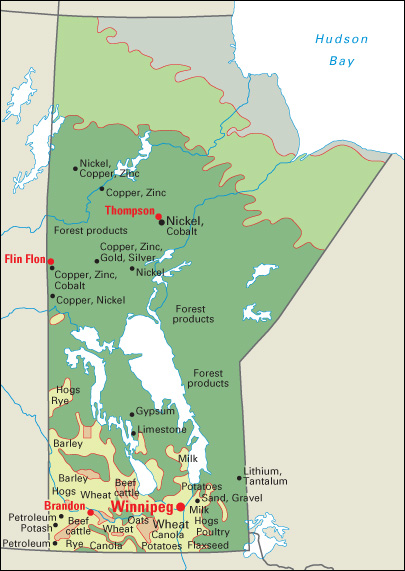
Natural resources.
Manitoba’s chief natural resources include fertile soils, mineral deposits, and freshwater lakes and rivers. The forests and wildlife of Manitoba are also important to the province’s economy.
Soil.
The deep, fertile soils of the southern plains are perhaps the province’s chief natural resource. Some of these soils were deposited by glaciers or by ancient glacial lakes. The soils of southern Manitoba vary from clays to loams and bog. The soils of the Hudson Bay Lowland contain clay.
Minerals.
The Canadian Shield region of Manitoba has large deposits of copper, gold, nickel, zinc, and other minerals. Deposits of gypsum lie just north of Lake Manitoba. Southwestern Manitoba’s minerals include bentonite, limestone, petroleum, and potash.
Water.
Rivers in northern Manitoba generate enormous amounts of hydroelectric power. The province’s 100,000 freshwater lakes draw many tourists in search of fishing, boating, and other recreational opportunities.
Service industries
account for most of Manitoba’s gross domestic product and employment. Service industries are concentrated in Winnipeg.
Winnipeg, the provincial capital, is the center of governmental activities. Some of Canada’s largest financial companies have their headquarters in Winnipeg. Several trucking firms are also headquartered there. The city is the home of Canada’s only agricultural commodity exchange. Winnipeg is also home to the University of Manitoba, Manitoba’s largest public university. 
Manufacturing
accounts for about one-tenth of Manitoba’s GDP and employment. The majority of manufacturing operations are in or near Winnipeg.
Food and beverage processing is a major manufacturing activity in Manitoba. Leading food-processing establishments produce bakery goods, dairy products, meat products, frozen potato products, and vegetable oil.
Winnipeg is a leading Canadian producer of buses and aerospace equipment. Manitoba is home to Canada’s largest manufacturers of windows, doors, kitchen cabinets, and furniture. Manitoba also has biopharmaceutical manufacturing, which makes products from biological sources, such as blood products.
Agriculture
provides the economic base for most rural communities in southern Manitoba. Beef cattle and hogs are the leading livestock products. Dairy farming is most important southeast of Winnipeg. Chickens and eggs are also important farm products in the province. 
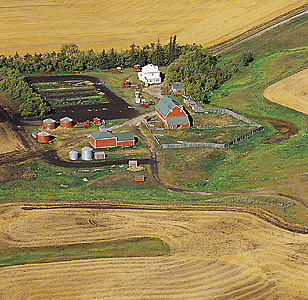
Canola and wheat rank as Manitoba’s most valuable crops. Wheat farmers primarily raise varieties of hard red spring wheat. Oats and potatoes are also important. Wheat and oat production is heaviest southwest of Winnipeg. Potatoes are grown in the southern and western parts of Manitoba. Canola, flaxseed, and sunflowers are grown for their oil.
Mining.
Copper, nickel, petroleum, and zinc are among Manitoba’s leading mined products. Copper is obtained as a by-product of nickel mining. It also occurs along with zinc. Large copper-zinc mines operate near Flin Flon and Snow Lake. Thompson is the center of nickel production in Manitoba. All of the petroleum mined in Manitoba comes from the southwestern part of the province.
Electric power and utilities.
Hydroelectric power plants generate almost all of Manitoba’s electric power. Plants on the Laurie, Nelson, Saskatchewan, and Winnipeg rivers supply power to Manitoba, nearby provinces, and parts of the United States. The major source of electric power is the lower Nelson River. Manitoba’s largest station is at Limestone Rapids.
Transportation.
Major airlines offer flights between Winnipeg and large cities in other provinces and U.S. states. Smaller airlines connect Winnipeg to Brandon, Churchill, The Pas, Thompson, and other communities in Manitoba.
Manitoba’s main rail lines branch out from Winnipeg to the east and to the west. Winnipeg also has three rail links to the United States. Brandon and Portage la Prairie are also important rail centers. The main rail line in northern Manitoba connects The Pas, Thompson, and Churchill.
Most of Manitoba’s roads are in the southern part of the province. The Trans-Canada Highway crosses Manitoba through Winnipeg and Brandon and serves as the major east-west thoroughfare. Other major roads link Flin Flon and Winnipeg with North Dakota, and Winnipeg with Thompson. In winter, bulldozers pack the snow to make seasonal roads in northern Manitoba.
Churchill, on Hudson Bay, is Manitoba’s only seaport. Blocked by ice during winter and spring, the port’s shipping season runs from July to November. Trains carry wheat and other goods to Churchill for export to Africa, Europe, Latin America, and the Middle East. Lake Winnipeg and the Red River are Manitoba’s most important inland waterways.
Communication.
The first newspaper published in Manitoba, The Nor’ Wester, was issued in 1859 in Fort Garry (now Winnipeg). Today, the largest daily newspaper is the Winnipeg Free Press. Other daily newspapers with large circulations include the Brandon Sun and the Winnipeg Sun.
The first radio station in Manitoba, CKY, began broadcasting from Winnipeg in 1922. The first television station, CBWT, began operating in Winnipeg in 1954. Two French-language radio stations broadcast from the St. Boniface area. Cable television systems and Internet providers serve many Manitoba communities.
Government
Lieutenant governor
of Manitoba represents the British monarch, Canada’s official head of state, in the province. The lieutenant governor is appointed by Canada’s governor general in council—that is, the governor general acting with the advice and consent of the Cabinet. The position of lieutenant governor is largely ceremonial.
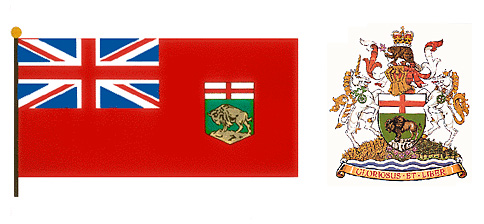
Premier
of Manitoba is the actual head of the provincial government. Manitoba, like the other provinces and Canada itself, has a parliamentary form of government. The premier is an elected member of the Legislative Assembly. The person who serves as premier leads the majority party in the Legislative Assembly.
The premier presides over the Executive Council (cabinet). The cabinet also includes ministers chosen by the premier from among party members in the Legislative Assembly. Each minister directs one or more departments of the provincial government. The cabinet, like the premier, resigns if it loses the support of a majority of the assembly.
Legislative Assembly
is a one-house legislature that makes the provincial laws. It has 57 members elected from 57 electoral districts. Members of the Legislative Assembly serve terms that may last up to five years. However, the lieutenant governor, on the advice of the premier, normally calls a general election—that is, a regular, provincewide election for the legislature—before the end of the five-year period. 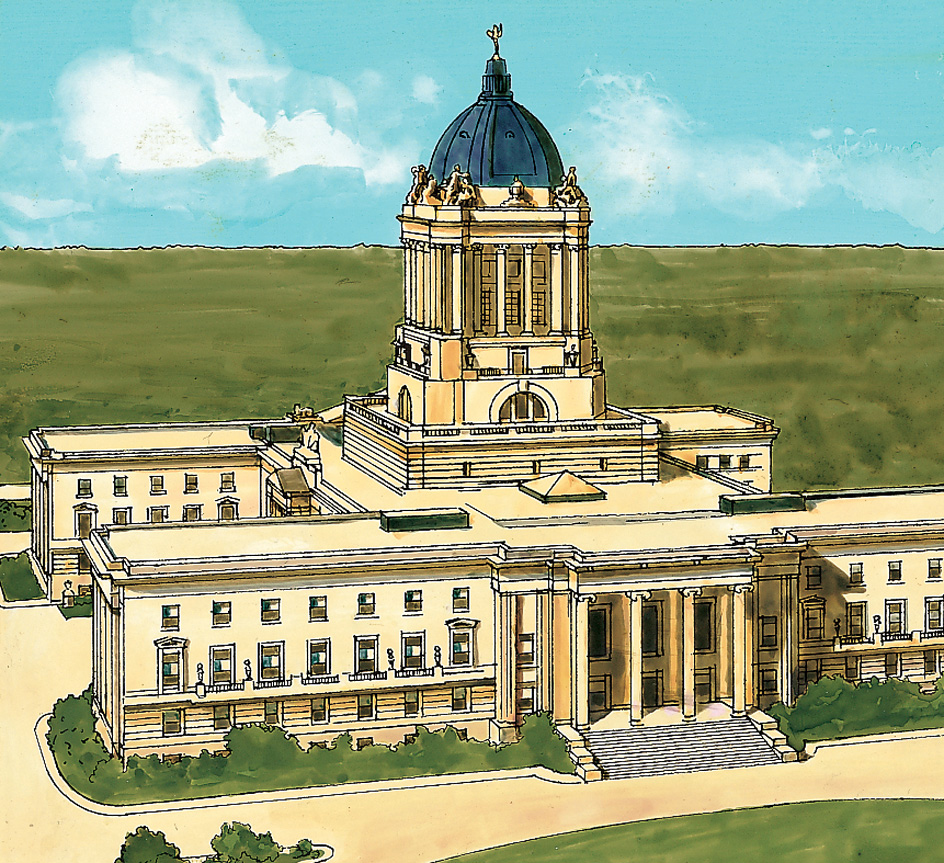
Courts.
The highest court in Manitoba is the Court of Appeal. It is made up of the chief justice of Manitoba and seven full-time judges of appeal. The Court of King’s Bench is the highest trial court in Manitoba and has authority to hear civil and criminal cases, including those that involve jury trials. The court consists of more than 30 judges, including a chief justice and two associate chief justices. Some of the judges serve the court’s Family Division. Manitoba’s Provincial Court deals mostly with criminal cases that do not involve jury trials. They also hear child-protection and certain other family cases.
The governor general in council appoints the judges of the Court of Appeal and the Court of King’s Bench. Provincial Court judges are appointed by Manitoba’s lieutenant governor in council. Provincial authorities appoint other judicial officers, including magistrates or justices of the peace.
Local government.
Manitoba has about 140 incorporated cities, towns, villages, and rural municipalities. A council headed by a mayor or a reeve governs each of these areas. The mayor or reeve and the council members are elected to four-year terms.
Winnipeg, Manitoba’s capital, is incorporated and governed by the City of Winnipeg Act. The province’s other communities—cities, towns, villages, and rural municipalities—are governed by the Municipal Act. Unincorporated communities in unorganized areas of the province are governed by Manitoba Indigenous Reconciliation and Northern Relations under the provisions of the Northern Affairs Act.
Revenue.
The provincial government of Manitoba gets about half of its general revenue (income) from taxation. Most of this money comes from taxes on personal income and retail sales. Other taxes include those levied on corporate incomes and sales of gasoline and tobacco. Transfer payments from the federal government account for about one-fourth of Manitoba’s revenue. Additional revenue is received from license fees and the Manitoba Liquor and Lotteries Corporation. The Manitoba Liquor and Lotteries Corporation operates two casinos and the province’s lottery system.
Politics.
Manitoba’s major political parties are the provincial Progressive Conservative, New Democratic, and Liberal parties.
The Progressive Conservative (PC) Party was formerly named the Conservative Party. Today, its members are usually simply called Conservatives. The New Democratic Party (NDP) is a democratic socialist party. It was formerly called the Co-operative Commonwealth Federation. In 1932, the Liberals joined the provincial government headed by a farmers’ organization called the Progressives. They were called the Liberal Progressives until 1961. A Manitoba citizen must be at least 18 years old to vote in an election.
History
Precontact era.
First Nations lived in the Manitoba region for many generations before they had contact with white people. When the first non-Indigenous explorers and fur traders arrived, a number of First Nations lived and hunted throughout the area. The Chipewyan (also called Denesuline) hunted caribou across the northern section. The Woodland and Swampy Cree, who hunted beaver, caribou, and moose, lived in the central forests and coastal lowlands. The Plains Cree fished and trapped animals in the prairies and wooded lowlands. The Assiniboine lived on the southwestern plains and hunted buffalo. The Chippewa (also known as the Ojibwe or Anishinaabe), who also hunted buffalo, lived in the southeastern section of the plains.

Newcomers.
The English explorer Sir Thomas Button and his crew were the first white people in the Manitoba region. They sailed down the west coast of Hudson Bay in 1612. Button and his crew spent the winter at the mouth of the Nelson River and claimed the land for England. Two English seamen, Luke Foxe and Thomas James, explored Hudson Bay and its west coast in 1631. 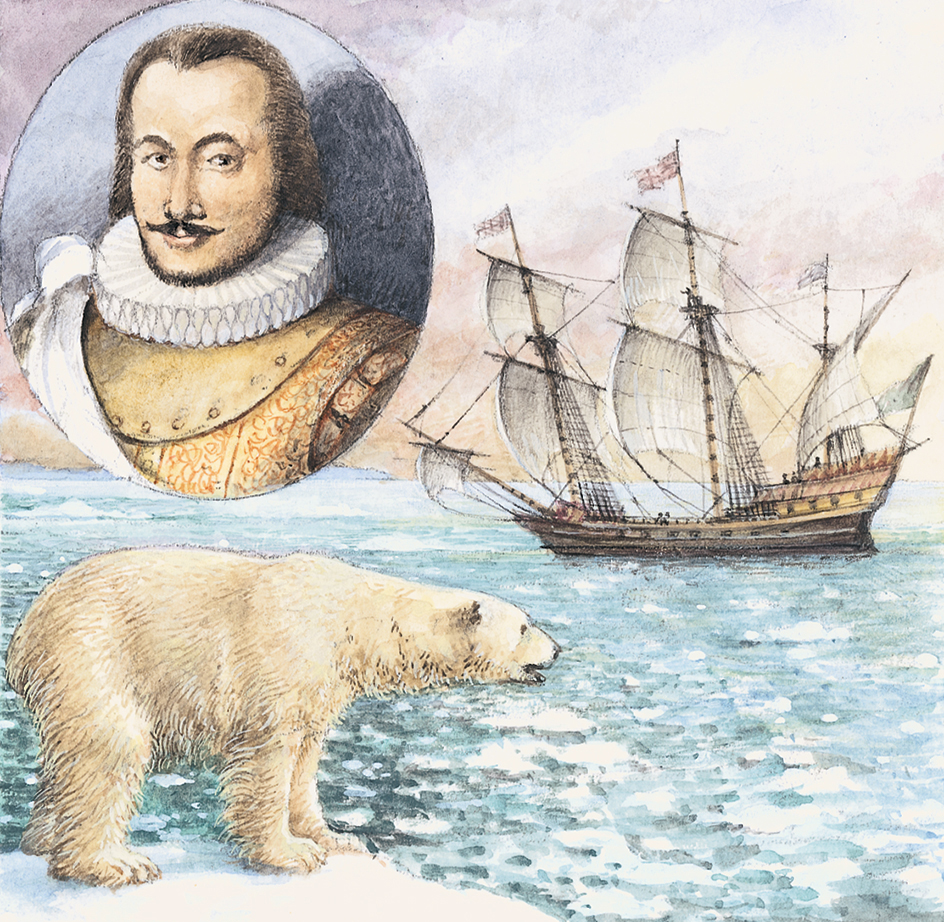
In 1670, King Charles II of England granted trading rights in the region to the Governor and Company of Adventurers of England trading into Hudson Bay (the Hudson’s Bay Company) of London. The region was called Rupert’s Land. By 1690, English fur traders had fought many battles with their French-Canadian rivals, who were pushing westward into the Hudson Bay region. The company sent Henry Kelsey on an expedition to find new fur-trading partners among the First Nations of the western interior. Kelsey left the company’s outpost in York Factory and traveled among the First Nations of central and southern Manitoba and Saskatchewan from 1690 to 1692. He persuaded many of them to bring furs north to the company trading posts. See Hudson’s Bay Company.
In 1731, Pierre Gaultier de Varennes, Sieur de La Vérendrye, left Montreal in search of an overland route to the Pacific Ocean. He and his men were French-Canadian fur traders. They built a series of forts between the Lake Superior area and the lower Saskatchewan River. These outposts included Fort Rouge, which La Vérendrye built on the site of present-day Winnipeg in 1738. The fur trade that he established cut heavily into that of the Hudson’s Bay Company.
In 1763, the British defeated the French in the French and Indian War, also known as the Seven Years’ War. France gave up its Canadian lands to the United Kingdom, and French exploration and trade in the Manitoba region stopped. In the 1770’s, the North West Company was first established in Montreal to compete with the Hudson’s Bay Company. The new firm soon disbanded. A new agreement drafted in 1784 reestablished the firm and officially adopted the name North West Company. See North West Company.
The Red River Colony.
While the two fur companies competed for trade, plans were made for the Manitoba region’s first agricultural settlement. In 1811, Thomas Douglas, the fifth Earl of Selkirk, obtained a land grant from the Hudson’s Bay Company. It consisted of more than 100,000 square miles (260,000 square kilometers) and covered much of the present areas of Manitoba, North Dakota, and Minnesota. From 1812 to 1816, Selkirk sent several parties of Scottish Highlanders and Irish to the Red River region around present-day Winnipeg. The immigrants founded the Red River Colony. See Selkirk, Earl of.
The early colonists suffered great hardships. Frosts, floods, and grasshoppers ruined many crops. At first, the settlers depended heavily on buffalo and other animals for meat. However, the colony lay in the heart of the North West Company’s area of operations. As the colony expanded, there was much competition for food, especially buffalo meat. The North West Company became increasingly hostile after the colony’s administrators issued the Pemmican Proclamation, which attempted to outlaw buffalo hunting in the Red River Valley. It turned local residents, including the Métis, against the colonists. The Métis, who depended on the buffalo for their livelihood, attacked the colony in 1815. In 1816, they killed Robert Semple, the colonial governor, and 20 others in the Battle of Seven Oaks. Peace came when the North West Company and the Hudson’s Bay Company merged in 1821.
The Red River Rebellion.
The Dominion of Canada, a union of four provinces, was created in 1867. In 1869, it arranged the transfer of almost all of Rupert’s Land from the Hudson’s Bay Company to itself in return for $11/2 million and land concessions. This area included the Manitoba region and the Red River Colony. The Métis in the area were not consulted regarding the transfer. They feared they would lose their land to settlers who would rush in after the area became part of the Dominion of Canada. The Métis and other local inhabitants opposed the transfer. Louis Riel, the leader of the Métis, directed a rebellion in 1869. See Red River Rebellion. 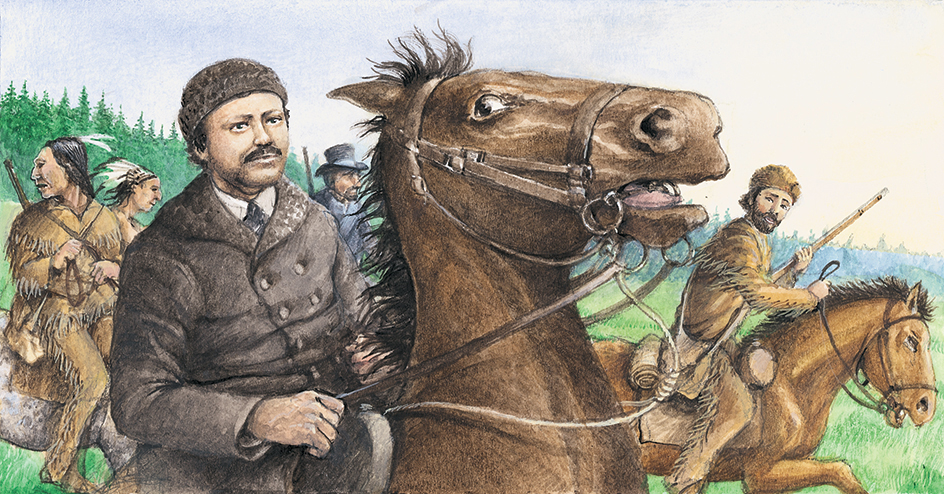
In 1870, the Canadian government granted the Métis a bill of rights in the Manitoba Act. This act made Manitoba Canada’s fifth province on July 15, 1870. The new province covered only a small part of present-day southern Manitoba, including the old Red River settlement. Winnipeg became the capital, and Alfred Boyd was the first premier. 
Growth as a province.
The expected rush of settlers into Manitoba began after 1870. Between 1871 and 1881, the population more than doubled, rising from 25,228 to 62,260. Most of the new arrivals came from Ontario. Manitoba was transformed from a Native province to one controlled by white immigrants.
In 1876, Manitoba began to export wheat. Farmers in the Red River Valley shipped wheat south along the Red River to Minnesota and to Toronto, Ontario. Wheat soon replaced fur as Manitoba’s most valuable product. In 1878, the first railroad in the province connected Winnipeg and St. Paul, Minnesota. In 1881, other lines linked Winnipeg with cities in eastern Canada and the wheat producing regions with Lake Superior. Manitoba grain could then be shipped to Canadian and European markets through ports on the Great Lakes.
Beginning in the 1890’s, Manitoba experienced a major wave of new settlers. Many settlers came from eastern Canada and many others from the United Kingdom and other areas of Europe. The production of grain expanded rapidly, especially from 1900 to 1913. During these prosperous years, Winnipeg became the rail center for the entire prairie region of Canada.
By 1901, Manitoba’s population had increased to more than 10 times that of 1871. The Canadian government extended the provincial boundary west to what is now Saskatchewan in 1881, and east to Ontario in 1884. In 1912, the northern boundary was extended to Hudson Bay and the 60th parallel north of the equator, giving Manitoba its present size and shape.
Economic developments.
Manitoba’s boundary extension to Hudson Bay opened up lands for mineral development, and the military needs of World War I (1914-1918) encouraged exploration. In 1915, prospectors discovered huge deposits of copper and zinc on the site of Flin Flon, in northeastern Manitoba. Mining operations became fully developed in 1930, and the town soon began to develop rapidly.
Cheap power, plentiful water, and the availability of labor encouraged the growth of many industries during the 1920’s and 1930’s. A pulp and paper plant opened in Pine Falls in 1927. Fur processing and clothing trades developed rapidly in Winnipeg during the 1930’s.
Political developments.
Between 1878 and 1922, Manitoba was governed alternately by the Conservative and Liberal parties. The Liberal administration of Thomas Greenway (1888-1900) presided over the expansion of railroads and settlement.
The Conservative Party, led by Sir Rodmond P. Roblin, a Winnipeg grain dealer, controlled the government from 1900 to 1915. It concentrated on economic development and boundary expansion. The Liberal government of Tobias C. Norris ran the province from 1915 to 1922 and passed much reform legislation. Some of these reforms provided for female suffrage, workers’ compensation, compulsory education to age 14, and rural farm credit. In spite of the reforms, however, Winnipeg remained a hotbed of labor unrest during World War I. The city’s labor problems erupted into the Winnipeg General Strike of 1919, in which 52 unions struck at once. The federal government and citizens groups worked to keep the province’s services running, and the strike failed. However, it did much to bring attention to workers’ rights in the emerging economy.
In 1922, a group of organized farmers defeated the Liberal government. They formed a new progressive government under John Bracken, the principal of the Manitoba Agricultural College. Bracken urged a union of parties. This union occurred in 1932, when the Liberal and Progressive parties merged to form the Liberal Progressive Party.
The Great Depression of the 1930’s created much hardship in Manitoba. Farm prices, especially for grain, were extremely low. The province, still dependent on agriculture, suffered widespread unemployment.
During the 1930’s, two new political parties appeared in Manitoba. The Co-operative Commonwealth Federation, later called the New Democratic Party, was made up of farmers and factory workers. The other was the Social Credit Party. Its members believed that governments should pay all citizens a dividend based on economic production.
The mid-1900’s.
World War II created a great demand for Manitoba cattle, metals, wheat, and wood. Many industries built new plants in the province during the war, and manufacturing continued to grow rapidly in the late 1940’s. By 1950, for the first time in Manitoba’s history, manufacturing outranked agriculture as the province’s main source of income.
After World War II, Manitoba began to need fewer farmworkers because of the increased use of machines and new farming methods. Thousands moved from rural areas to cities and found jobs in factories and service industries.
Geologists discovered important mineral deposits in Manitoba during the 1940’s and 1950’s. Copper, nickel, and zinc ores were found in a northwestern area in 1945. Oil companies developed rich oil fields near Virden in the early 1950’s. In 1956, prospectors found huge nickel deposits in the Moak Lake-Mystery Lake area. The International Nickel Company of Canada, Limited, also known as Inco, built a complex at Thompson, and nickel mining began there in 1960. Thompson became an important producer of nickel. Inco was acquired by Vale, a Brazilian-based mining corporation, in 2006.
The province continued to develop its rich sources of electric power in the 1950’s and 1960’s. By 1954, all rural areas had electricity. In 1963, the first laboratories began operating at the Whiteshell Nuclear Research Establishment at Pinawa, near Winnipeg. A nuclear reactor operated there from 1965 to 1985.
The biggest growth, however, was in the service and public sectors. By 1970, the federal, provincial, and local governments were the largest employers in Manitoba.
The Liberal Progressive Party governed Manitoba during the 1940’s and most of the 1950’s. The Progressive Conservative (PC) Party won power in 1958 and held it until 1969. That year, the New Democratic Party (NDP) won a general election. The Progressive Conservatives regained control of the government in 1977.
Language rights.
In the late 1970’s and early 1980’s, problems arose concerning French language rights. French had been removed as an official language of Manitoba in 1890. In 1979, however, this removal was ruled unconstitutional by the Supreme Court of Canada. In 1980, the constitutionality of speeding tickets issued only in English was challenged in court.
The New Democratic Party returned to power in 1981. The government offered the French-speaking community translation of key legislation and extension of some French-language services throughout the province in return for an end to constitutional challenges. But it was unable to enact the compromise package. In 1985, the Supreme Court ruled that all Manitoba laws must be translated into French.
The late 1900’s and early 2000’s.
By the early 1980’s, years of neglect had led to much of central Winnipeg becoming rundown. However, since then, development initiatives have helped rejuvenate the city’s downtown area. These initiatives have included the development of a historic area known as the Forks and of the historic Exchange district. 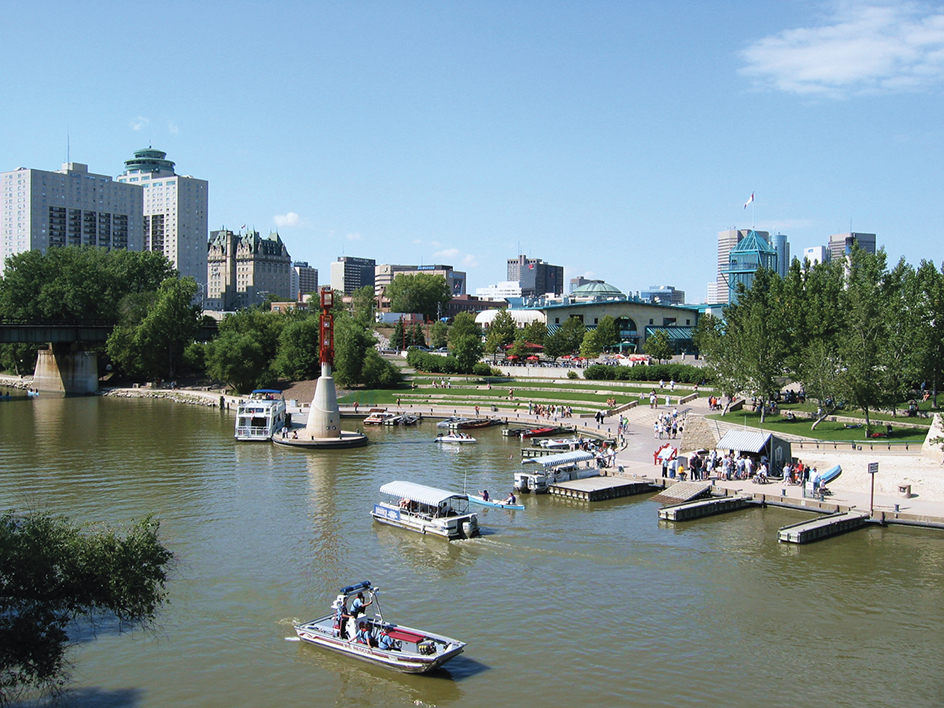
The Progressive Conservatives returned to power following a general election held in 1988. Since then, either the Progressive Conservatives or the New Democrats have led the government.
In a general election held in 2019, voters elected the first three Black members of Manitoba’s Legislative Assembly. In 2021, Brian Pallister resigned as leader of the PC Party and as premier of Manitoba. Heather Stefanson was elected to replace Pallister as the party’s new leader, and thus became Manitoba’s first woman premier. Following a general election held in 2023, NDP leader Wab Kinew became premier. Kinew, an Anishinaabe man, became the first First Nations premier of Manitoba.
